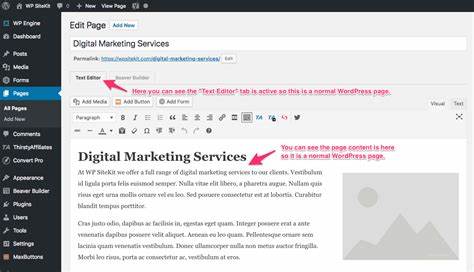Table of Contents
Introduction:
The WordPress text editor is an essential tool for anyone who wants to create high-quality posts and pagesText Editing on their WordPress website. Whether you’re a beginner or an experienced user, this guide will provide you with a comprehensive overview of the text editor and its features, so you can start creating content with ease and confidence.

Visual Editor:
The visual editor is the default editor in WordPress and is designed to provide a user-friendly and intuitive interface for creating posts and pages. This editor provides a WYSIWYG (what you see is what you get) interface, allowing you to format and style your content using a familiar word processing interface. The visual editor provides you with a toolbar that includes buttons for adding text, images, links, and other elements. You can also use the insert buttons to add tables, lists, headings, and other formatting options to your content.
One of the great things about the visual editor is that it makes it easy to see how your content will look as you create it. This is especially helpful for those who are new to WordPress and are still getting used to the platform. With the visual editor, you can quickly and easily format your content, add images, and insert links, without having to worry about the underlying HTML code.
HTML Editor:
In addition to the visual editor, WordPress also includes an HTML editor that provides a code view of your post or page. This editor can be especially useful if you need to make changes to the HTML code or add custom elements to your post that aren’t available in the visual editor. With a little bit of HTML knowledge, you can use the HTML editor to fine-tune your posts and make them look exactly how you want.
For those who are familiar with HTML, the HTML editor provides a way to directly edit the code behind your posts and pages. This can be helpful if you need to make changes to the underlying HTML code, such as adding custom CSS or JavaScript. You can also use the HTML editor to add custom elements, such as widgets, to your posts and pages.
Writing Tools:
In addition to the visual and HTML editors, WordPress also includes a number of writing tools to help you create and format your content. These tools can help you write more efficiently and effectively, so you can create high-quality content in less time.
The Kitchen Sink button provides access to additional formatting options, such as headings, lists, and tables. The Distraction-Free Writing mode provides a full-screen interface for focused writing, allowing you to write without distractions and keep your content front and center.
The Text Editor also includes a number of keyboard shortcuts that can help you write more efficiently. For example, you can use keyboard shortcuts to quickly format your content, such as bolding and italicizing text, adding headings, and creating lists.
Using these writing tools, you can create high-quality content more quickly and easily, allowing you to focus on what you do best – writing!
Conclusion:
The WordPress text editor is a powerful tool that can help you create high-quality posts and pages on your WordPress website. Whether you prefer the visual editor or the HTML editor, or you need to use the writing tools to improve your content, this guide provides you with all the information you need to get started.
So, take a few moments to explore the text editor and see how it can help you simplify your content creation process and improve your WordPress blog. With its intuitive interface, powerful writing tools, and easy-to-use features, the WordPress text editor is a must-have tool for anyone who wants to create great content on their WordPress website.
